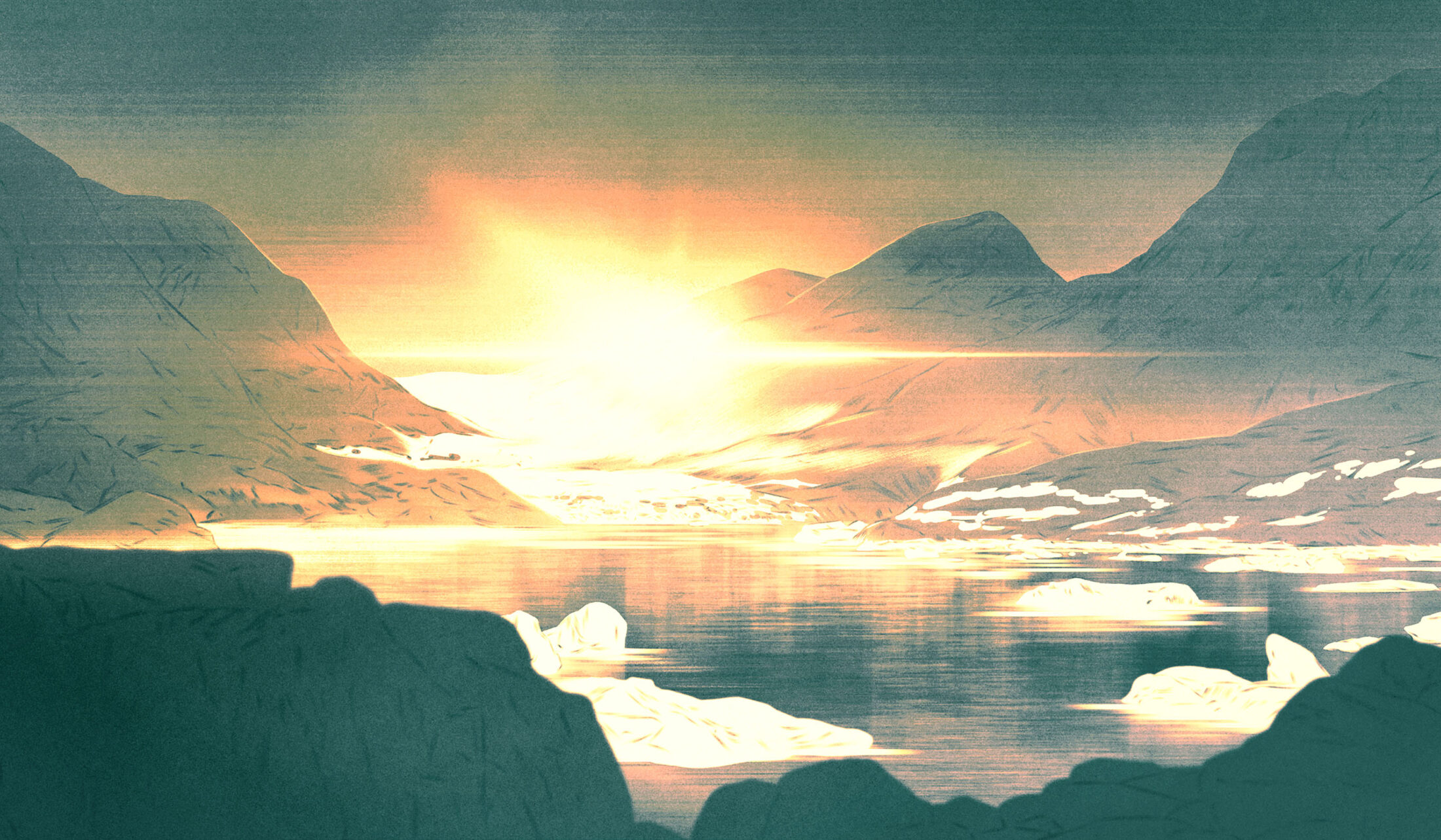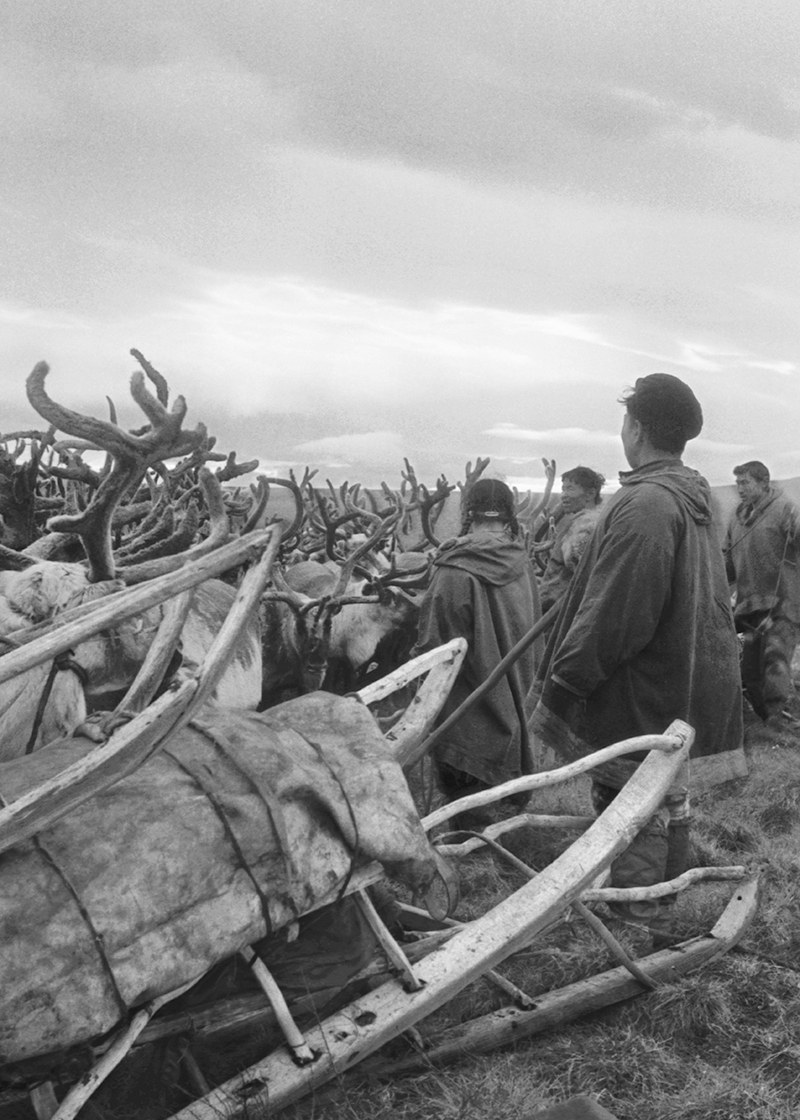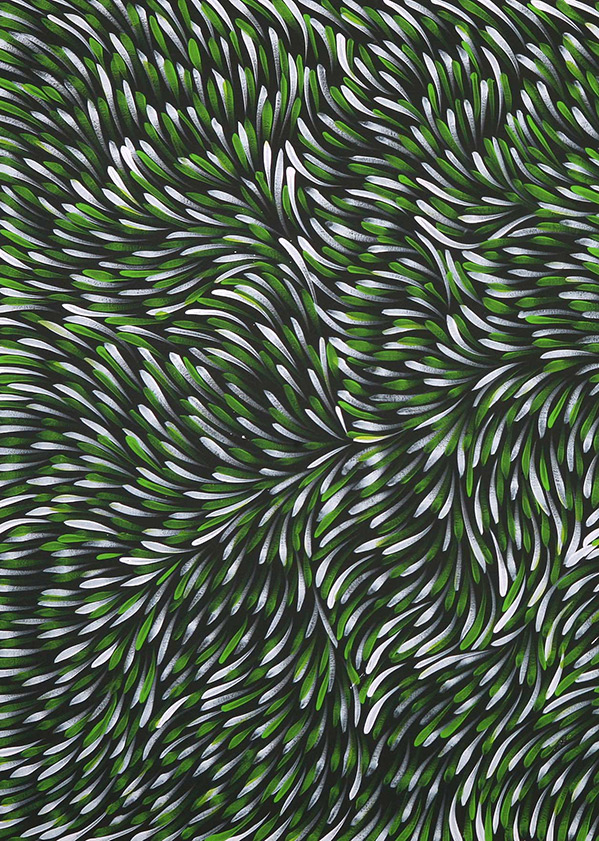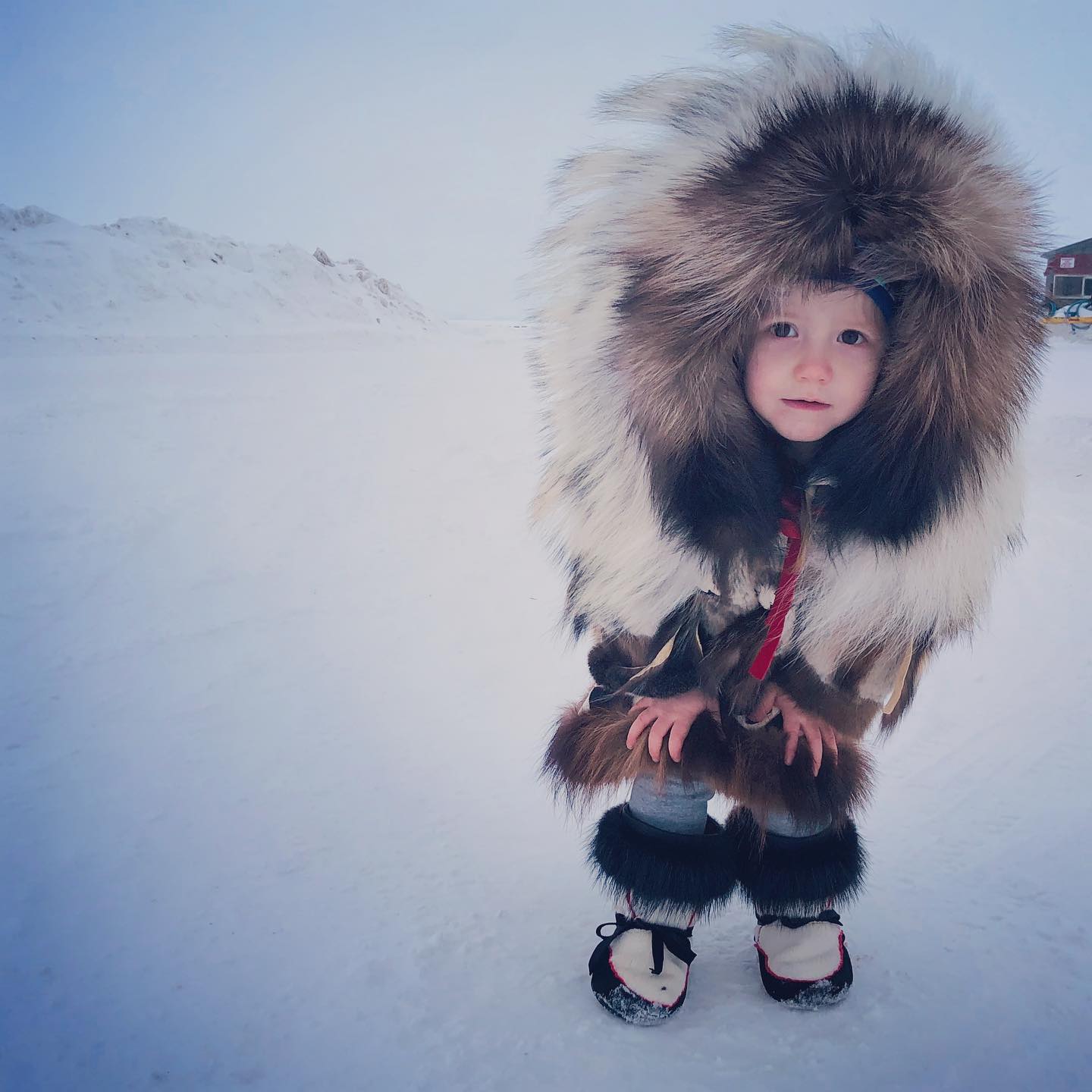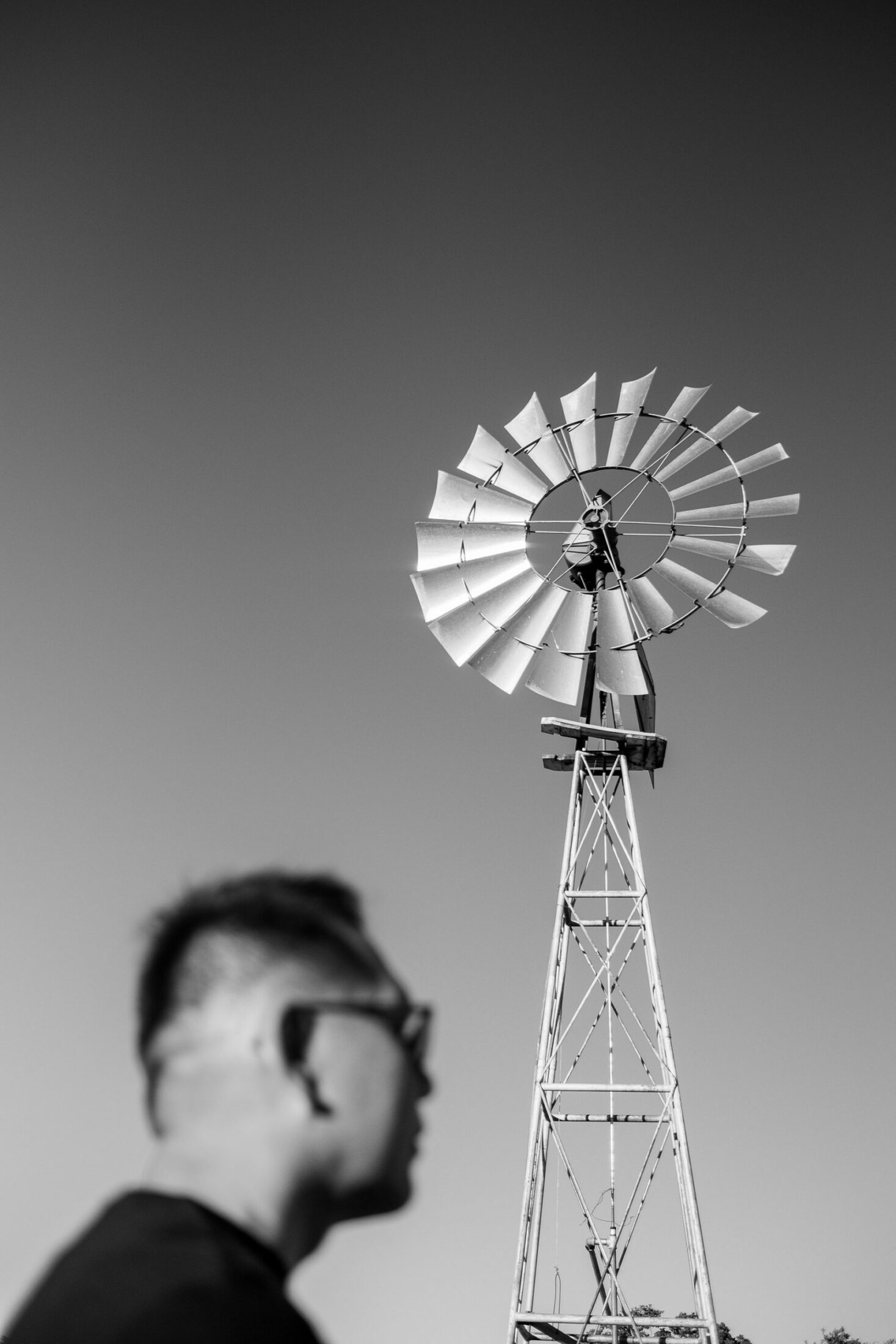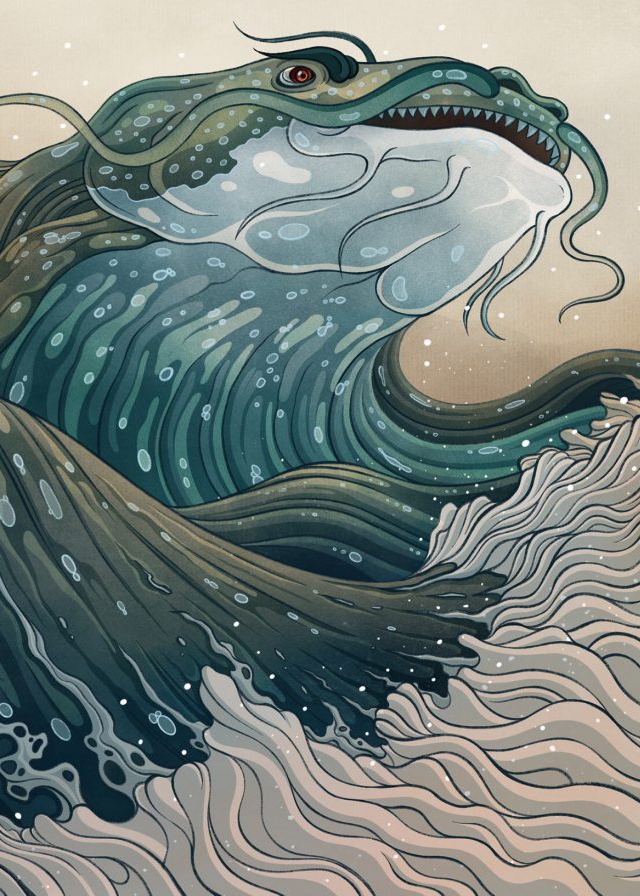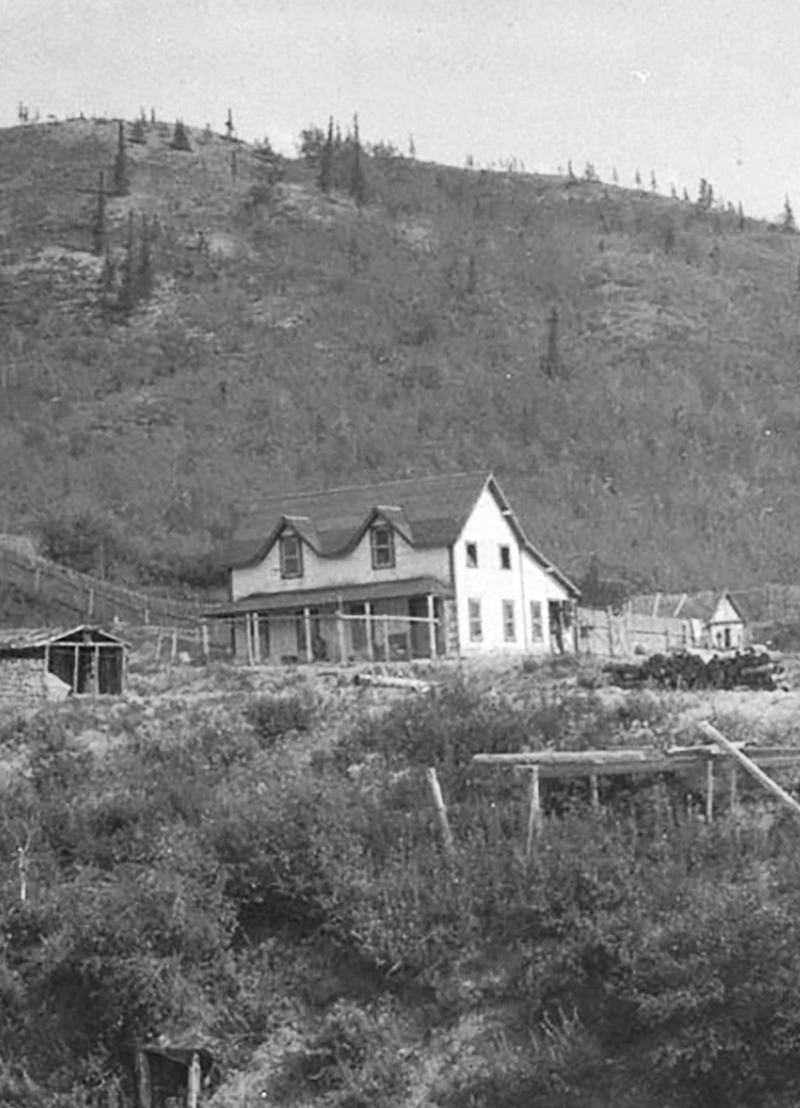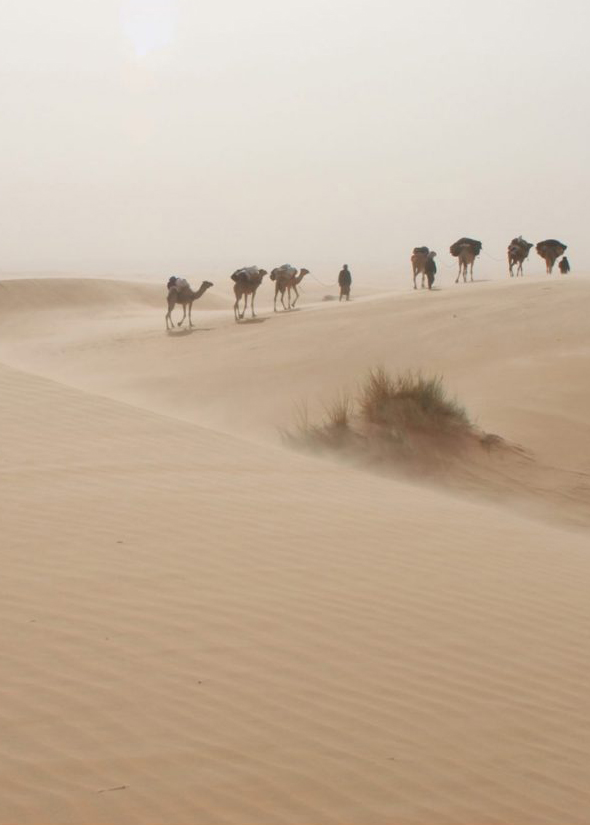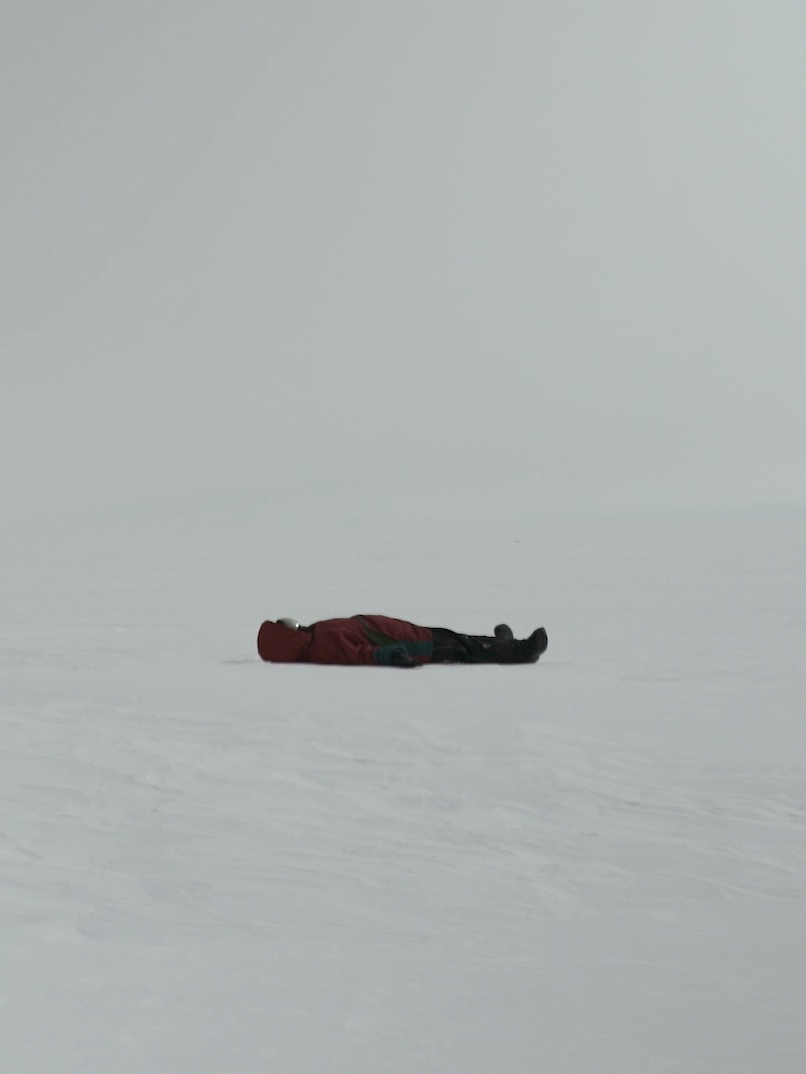
Stephen Lezak is a PhD candidate in the Scott Polar Research Institute at the University of Cambridge. His work focuses on the politics of climate change in the context of communities and landscapes in the North American Arctic.
Isabel Seliger is an artist and illustrator based in Berlin, Germany. Since graduating from the School of Art and Design Kassel, where she specialized in visual storytelling, she has worked as a freelance illustrator for international clients such as The New York Times, Süddeutsche Zeitung, Bloomberg, and The Atlantic.
As Stephen Lezak explores the paradoxical human narratives that overlay the Arctic landscape—a frontier, a paradise, a marker of humanity’s impact on the planet—he bears witness to a place that is teetering in an uneasy balance between eternity and loss.
For Barry Lopez
I
The sun was still up at 10 p.m. when the passenger ferry departed for the archipelago of Lofoten, along the northwestern coast of Arctic Norway. Around midnight, I stepped out onto the foredeck and into a dimly lit world, devoid of color or shadow. Shapeless gray clouds strung along the horizon. The ferry swept over a dark sea below. Even darker shapes, now black, emerged from the water, each bearing a luminous white oval. Transiting through the twilight, a pod of orcas swam ahead, keeping pace. Here, in the middle of the Vestfjorden, a fifty-mile-wide bight of the North Sea, we shared a moment of mutual recognition, beholding each other in the stillness of the arctic night.
Earlier that afternoon, I stood in the checkout line of a grocery store with Ole Gunnar, a Norwegian army officer who hosted me in the mainland town of Bødo. At the till, he held up a parcel of vacuum-packed meat.
“You know what this is?” he asked with a smile. It was dark red, almost purple, and cut into a blocky prism.
“It’s whale,” he said, smiling, and tossed it onto the conveyor belt.
We often tell stories of the Arctic as though we were on the other side of a frontier that separates it from humanity. The Arctic—where foreigners encounter a sublime landscape, still and pristine; where women and men test themselves against the hostile elements; where experts sojourn under the banner of science to discover the essence of Nature, and in Nature’s reflection encounter some essential humanity.
These narratives conjure a certain stillness in the landscape, a sense that the Arctic is not merely empty, but slow. Like the expression “frozen in time,” our warm-blooded bias equated metabolism with motion, and motion with speed. We imagine a timeless place, and it seems to make sense. At least to foreign eyes, there is an undeniable patience to the long hours. The obliquity of the light. The scale and silence of a glacier pondering its future. The sense that at these latitudes every life is earned over millennia.
But all of this is changing. In the present, we are reorienting ourselves to a new Arctic, one which embodies speed alongside stillness in an unstable tension. Climate change has perforated the identity of the place. Somehow, it remains otherworldly and sublime. But breathless reports tell of an imminent collapse, a somber herald of things to come. As goes the Arctic, so goes the planet. We once revered this place for the absence of human traces; now we look north to witness the globality and pace of our impact upon the earth. And the border that separated the Arctic from human dominion? Perhaps it was only a line drawn in the snow.
At least to a foreigner, the landscape and the human place within it are shifting too quickly to apprehend. We are left with a web of contradictions: a region traditionally cast as humanity’s antipode is starting to feel unsettlingly intimate. But in the Arctic, we still encounter a world that captivates us. Even now, in the ragged teeth of the so-called Anthropocene, its frigid waters lap at the industrial thrum in our minds, and through that boundary, we imagine our escape.
The orcas moved on, disappearing beneath the inky water, and I returned to the fluorescent warmth of the upholstered cabin.
II
In 1819, William Parry set out from England to find the Northwest Passage, a hypothesized sea route between the Atlantic and Pacific Oceans. As early as the fifteenth century, European cartographers had speculated that such a passage existed. Their vision quickly became a holy grail for naval explorers, who voyaged with imperial fervor to the Canadian Archipelago in search of a pathway through the ice and glory back home.
At the time, the Arctic was a literal blank space on many maps. It was not just absent of humans, but anathema to them: a place where people could visit but never remain.
Parry, aboard a sailboat clad in oak and iron, traveled farther west along the Passage than any previous European. He reached the 110th meridian, due north of the border between present-day Colorado and Utah. Still, the Pacific Ocean was nowhere in sight. As summer faded and the sea began to freeze, Parry and his crew found a harbor on Melville Island, in the heart of the archipelago. The sailors cut their way into the freezing bay and anchored on the 26th of September. Ten months would pass before they sailed out the following summer.
In his journal that winter, Parry described a “death-like stillness of the most dreary desolation, and the total absence of animated existence.” In the depth of the long polar night, with three months between sunset and sunrise, the sailors created their own sense of time. Under Parry’s direction, they exercised, wrote and performed plays, brewed beer, and published a weekly newspaper.
Sixty years later, George De Long, an American naval officer, sailed from San Francisco, still searching for the Northwest Passage. De Long, like many other explorers of his age, believed that the true North Pole was located in a warm ocean that lay beyond the margins of ice that had trapped previous explorers. Perhaps Parry and the others simply hadn’t gone far enough north before trying to cross the waters above North America. In September 1879, De Long’s ship became trapped in pack ice, high above the Bering Strait. His own journal echoed Parry’s: “This is a glorious country to learn patience in.”
The Arctic is no longer such a patient place. In the past fifty years, the average temperature of the region has increased by 2°C (and as much as 4°C in isolated places, such as Svalbard, off the northern coast of Norway). By coincidence, 2°C is also the threshold agreed upon by climate scientists and policy advisors as the point at which the risks of climate change become unacceptable. Although the planet at-large has logged 1.0°C of warming, the Arctic is already crossing a speculative frontier that divides catastrophic climate change from something presumably less disastrous. It is rehearsing a climatic future for the rest of us. Far from moving slowly, as earlier visitors observed, the High North is outpacing the rest of the world.
We often tell stories of the Arctic as though we were on the other side of a frontier that separates it from humanity.
The climatic mechanisms behind this acceleration are known as Arctic amplification. The Arctic, covered in snow and ice, is more responsive to changes in atmospheric chemistry than the rest of the earth. Frozen water reflects a large share of incoming sunlight back toward the sky, whereas darker soil, vegetation, and liquid water absorb relatively more energy. Arctic amplification follows this specific feedback loop: as snow melts, the exposed ground below absorbs more heat, which in turn melts more snow, and so on. Climate change in the Arctic is akin to rolling a stone down a mountainside: it cannot fall forever, but it is nearly impossible to predict where it will come to rest.
The Arctic visited by Parry and De Long no longer belongs to the present. The landscapes they visited survive only in logbooks, geologic records, and the traditional knowledge of local communities. At first, this shift took place gradually. When the Northwest Passage was finally navigated in 1906, the sailors completing the transit overwintered three times along the way. The fifty years following that first voyage saw only three more successful crossings. But in recent decades, the surface area of arctic sea ice in late summer has declined to roughly half of 1970 levels. In 2019, the second-hottest year on record, twenty-four vessels transited the Passage. They ranged from a cargo ship carrying wood pulp bound for China to a 530-passenger cruise ship—named Roald Amundsen, in honor of the man who captained the first successful voyage through the Passage more than a century ago.
These changes will continue to gain momentum. Climatologists predict that in fifteen years the Arctic Ocean may experience entirely ice-free summers. Maritime trade journals are rife with murmurs of a Transpolar Sea Route: a passageway that could allow commercial vessels to sail from the Bering Strait directly to Svalbard. The route would more or less transit the North Pole, which in late summer would look like any other body of open ocean on the planet. The landscapes imagined by ancient maps are becoming more real, while the actual landscapes of the eighteenth and nineteenth centuries are rapidly becoming mythical.
But even as the Arctic landscape merges with human and temperate timescales, it resists assimilation. Perhaps this is because the place is defined by its oblique relationship to the sun, and by extension, a proximity to the earth’s axis of rotation. In a planetary sense, the region is literally slower. At higher latitudes, the speed of the earth’s rotation decreases, finally becoming still at its center. In this region, farthest from the equator, the earth’s time zones pinch together like the petals of a lily blossom. And at the North Pole itself, the sun travels in an arc nearly parallel to the horizon. Instead of a sunset and sunrise every twenty-four hours, there is only one day each year, and one corresponding night, each lasting six months. In a limited sense, this latitude is indeed timeless: if you designed a clock to measure the shift from daylight to darkness at the North Pole, it would need to count several thousand hours instead of the usual twelve.
Across the Arctic Circle, these celestial differences make landscapes appear patient. I arrived in Lofoten a month after the summer solstice, when the sunlight falters for an hour, maybe two, and dusk becomes dawn with no boundary of darkness in between. In the course of each day, the sun arcs across the sky like a stone over water, always from left to right. The archipelago itself resembles a flooded version of Yosemite Valley. Domes of rock watch over the North Sea, connected to each other by tendrils of meadows that cross the fjords. The mountains’ long shadows soften in the arctic light. When I gathered wild mussels for dinner, I found the ancient granite headlands mirrored in their shells. Here, one readily encounters what Barry Lopez called the “long, unbroken bow of time.”
It is a peculiar feeling to be present to the Arctic today, to witness an accelerating disaster but still find truth in the century-old accounts of spellbound sailors. But this is part of the Arctic sublime—an indomitable otherness that is variably fragile and untouchable. There is a vestige of the place that refuses to accelerate, unmoved by any amount of fossil fuels. To experience this tension is to hold eternity and loss together in an uneasy balance. It is also to wonder: which parts of the place will outlast us, and which will be consumed atop our industrial pyre? The elegy itself is speculative.
This much is certain: on a late summer night, a million years from now, the sun will dip below the horizon of the Vestjorden, pause, drift to the east, and roll back into daylight. Who, or what, will bear witness remains unknown.
III
The most widely known descriptions of the Arctic are written by foreigners who come to know the landscape in implicit contrast to their homes farther south. Our ideas of the High North are marked by this colonial vantage. When I speak of the Arctic as a foreigner, I am also speaking of myself. To describe the place without reference to this perspective is to mistake a mirror for a window.
It’s no wonder, then, that when we look to the Arctic, we see faint projections of our own dreams. Many centuries ago, the North was a landscape of imagined paradise. The Ancient Greeks called it Hyperborea. Later, Europeans dreamt of an ultimate wilderness, one that could endure the industrial imperialism that raged across the temperate world. In the most recent rendition, the white purity of the snowbound landscape becomes a proving ground, a foil for the lusty explorer, eager to prove that his masculinity is untarnished by the niceties of urban life. In all of these dreams, the Arctic promises something exotic, impossible to apprehend.
In the past decade, instead of looking to the Arctic for a sublime encounter, we have turned north and seen our growing bill of damages. Formerly an unknowable other, the Arctic has more clearly become an extension of our collective, marauding selves. A testament to our hubris: no longer something to revere, but something that requires our care. Instead of being humbled by the North, we are humbled at the scale of our own destructive power.
This is part of the Arctic sublime—an indomitable otherness that is variably fragile and untouchable.
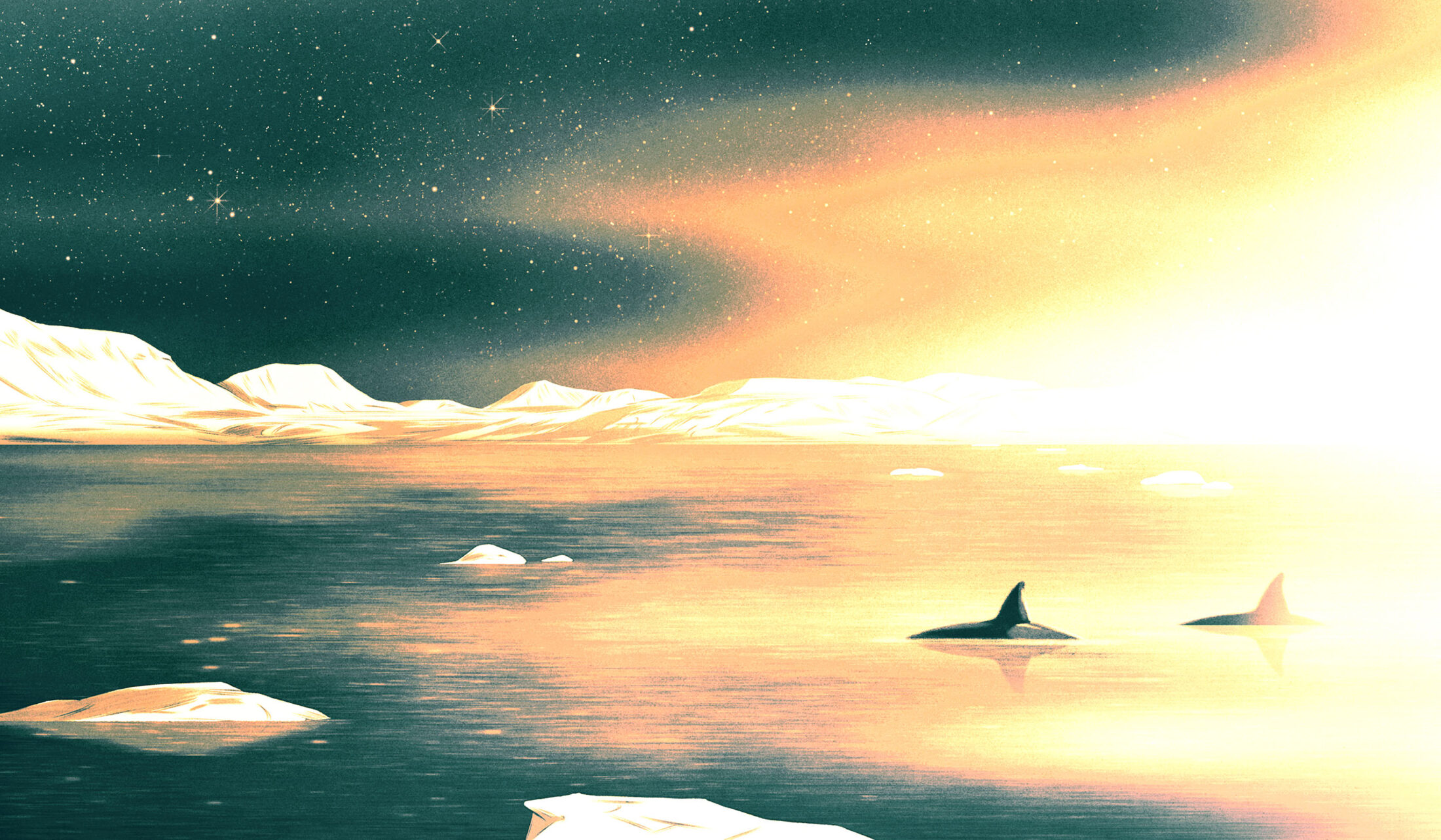
The two narratives, although contradictory, survive alongside each other. Even as elegies are written for a disappearing landscape, people still travel to the Arctic under the banner of expedition. Adventure-seeking tourists marvel at calving glaciers. Adventure-seeking scientists document faltering ecosystems and fracturing ice sheets. Awe and melancholy weave together in unsettling ways. But in the process of accounting for our agency in the Arctic landscape, we release the idea that it was ever otherworldly to begin with, too distant to be tarnished by civilization. The Arctic is losing its supposed wildness.
This contemporary vision of ecological destruction is made possible by a history of imperial erasure. Colonial dreams of the Arctic always relied upon a backdrop of a steely wilderness, cast as empty and virgin before European arrival. As if the very same voyages to the High North, billed as feats of endurance and engineering, were not also journeys through the ancient homelands of Indigenous communities. As if the edge of one person’s map were not the hearth of another’s.
Humans first came to inhabit the Arctic as overland migrants in northern Eurasia. They settled across present-day Russia, eventually reaching the easternmost edge of Asia, where the Arctic and Pacific Oceans meet. Geologists believe that until about eleven thousand years ago it was possible to walk across—or paddle alongside—a broad land bridge that connected eastern Siberia with western Alaska. An unknowable number of people made the journey, likely becoming the first humans to make their homes on the east side of the Pacific Ocean.
These ancient explorers encountered a widely glaciated landscape. The only pathway for their migration continued south along the Alaskan coast, keeping close to the Pacific Ocean and its rich kelp forests, until arriving in more temperate regions. Thousands of years later, as the glaciers retreated amid a warming climate, bands of travelers moved north across the continental interior and settled along the broad arctic waterways that are known today as the Northwest Passage. Over generations, these communities and their cultures grew, shifted, and waned. The Dorset people, known today for their captivating carvings of animals, were gradually replaced by the Thule. The Thule came to inhabit the coasts of northern Canada and much of Greenland. They were the predecessors of the Indigenous people encountered by European sailors: the Inuit.
European encounters with the Inuit feature prominently in the earliest written accounts of Arctic exploration. During their sixteenth-century voyages in search of the Northwest Passage, Martin Frobisher and his crew engaged with local Inuit communities in reciprocal acts of kidnapping, trade, murder, and gift-giving. The sailors’ journals detail the anthropological curiosity that each group held for the other. The Inuit and the Englishmen exchanged language lessons and admired their respective technologies. Frobisher’s successors followed suit, journeying with the aim of establishing a form of communication and trade. In 1585, the captain John Davis instructed the musicians in his crew to serenade the Inuit as their ship approached and for other sailors on board to dance and make “many signes of friendship.”
This mutual interest between Europeans and Inuit continued despite unpredictable violence and the trauma of disease brought by the sailors. The Inuit suffered disproportionately in these encounters, as Europeans enriched themselves with furs while drawing maps for prospective conquest. All the while, their curiosity for the people of meta incognita—the unknown coast—never faded. Sailors would occasionally write reverently of the Inuit, particularly as polar explorers learned to adopt their technologies, such as dogsleds and fur coats.
Later, these depictions of the Arctic as a social landscape would lead to a tension with the romanticized narrative of a Northern wilderness. In particular, the notion that Indigenous peoples could thrive in the Arctic—“that the Eskimos were healthy and happy,” as one explorer wrote in the early twentieth century—was at odds with the story of European technological dominance. This tension grew as the North American Arctic became a site for settler colonialism rather than exploration. To validate the imperial vision of the High North as a place that was always already empty, Indigenous peoples and their histories were systematically erased. Most often, this erasure took place through the violence of disease, murder, displacement, and forced assimilation. In other instances, Indigenous communities were simply ignored altogether, or placed into the category of the natural: primitive to the point of being not fully human. When acknowledged, their presence was often manipulated to cast the settler as a savior, arrived just in time to rescue them from the menaces of the northern wilderness.
These were the first erasures, but more would follow. As the Arctic became increasingly colonized, the narratives of a pristine and still landscape veiled an accelerating industrialism. In the nineteenth century, at a time when resource imperialism was remaking entire continents, Europeans began searching for wealth in the supposed emptiness of the High North. They found a tremendous bounty just below the surface of the sea.
IV
In Lofoten, I spent days walking between old villages tucked into fjords, accessible only by rough overland trails or the semi-enclosed skiffs that serve as local ferries. In the smaller towns, a single road of soft turf curves around the shoreline, with houses on either side painted red and yellow. Some of the older structures are cantilevered above the sea, with their stilts resting among the kelp below. In the villages where commercial fishing still takes place, enormous wooden racks await the annual catch of cod, which are brought ashore, split along the spine, and hung in the open air to dry for weeks during the winter. Today, the fishing industry of Lofoten is dominated by the cod harvest. But until recently, the archipelago was one of the central hubs of Norway’s vast whaling economy.
Before the development of fossil fuels, whale blubber was used as lamp oil across the world. Even before the twentieth century, European hunters killed hundreds of thousands of whales to furnish the industrializing world with light. But there were natural limits to the take. Back on land, the industrial revolution was well underway, but whaling continued to rely on pre-industrial technology, including sail-powered ships and hand-thrown harpoons. Even so, by the middle of the nineteenth century, slow-moving sperm whales and right whales nearly disappeared from the temperate waters of the Pacific and Atlantic Oceans.
Formerly an unknowable other, the Arctic has more clearly become an extension of our collective, marauding selves. A testament to our hubris: no longer something to revere, but something that requires our care.
A paradox arrived in the 1860s. Kerosene, refined from fossil fuels, quickly replaced whale oil as the latter became scarce. From this decade onwards, the collapse of the whaling industry was foretold as the natural next step of industrial progress. A cartoon in an 1861 issue of Vanity Fair bore the caption, “Grand Ball Given by the Whales in Honor of the Discovery of the Oil Wells in Pennsylvania.” It depicts a party of sperm whales standing upright, wearing tailcoats and ball gowns, and raising their glasses in celebration. A banner in the background reads, “Oils Well that Ends Well.”
The celebrations turned out to be premature. Although fossil energy wiped out the primary market for whale oil, it also unleashed new possibilities for whaling to industrialize. The first steam-powered whaling ship was launched in Arctic Norway in the 1860s by Svend Foyn, an enterprising whaler. Less than a decade later, Foyn patented the harpoon cannon, a device that uses gunpowder to launch a harpoon, which in turn has a grenade mounted on the tip of the spear, rigged to explode a moment after striking flesh. With whale populations already devastated in much of the Atlantic and Pacific, whaling ships sailed high into the supposedly empty waters of the Arctic. Where explorers saw stillness, whalers discovered abundance.
In the course of the twentieth century, an estimated 2.9 million whales were killed across the world. The cumulative harvest would amount to the largest cull, measured by weight, of any animal in human history. The breathless pace of exploitation came as a shock to the High North. In many cases, the arrival of whaling ships and remote whaling stations were the first large-scale incursions of capitalism and colonialism to the region. Ecosystems and Indigenous communities reeled as millions of pounds of biomass were hauled aboard vessels, butchered at sea, and sent to distant lands, where they were transformed into fertilizer, margarine, pet food, and automatic transmission fluid. To Europeans, this slaughter was a livelihood, an investment, the key to unlocking a vision of progress. To Indigenous communities who watched from the shore, it was both an opening and a closing. New technologies arrived, along with new gods and faraway governments. The relative commotion was mirrored by a quiet that settled into coastal waters, as lively seas lost their largest inhabitants.
The violence of whaling prefigured the steady northward expansion of industry. By the middle of the twentieth century, the pace of activity on land defied European explorers’ earlier accounts of a desolate landscape. Whaling stations turned into cities. Remote places now had “strategic value” and became the sites of military operations. At one point, the United States came remarkably close to excavating a deepwater port in northwestern Alaska using atomic bombs. Waves of gold rushes pushed farther north, leaving behind blasted landscapes and communities dislocated from their homelands. Oil production followed, eventually crossing the 70th parallel. Throughout these frenetic decades, ecosystems were ravaged, and Indigenous communities were displaced or forced to adopt their colonizers’ livelihoods. Unable to rely on the landscape for sustenance, many villages adapted by turning to the same global commodity trades (often in furs or gold) that caused their displacement.
Far from being pristine, the modern history of the Arctic is one of extraction and genocide. And with climate change, the scale and scope of human impacts are gathering momentum. At first, the realization registers as grief. On a warming planet, no place on earth is truly wild in the sense of existing apart from humanity. But in the wake of this loss, we may recognize a connection that was previously denied by the separation of the cosmos into two geographies: civilization and wilderness.
In the Yup’ik language, the word ella is variously translated as climate, atmosphere, weather, environment, and world. A Yup’ik elder in Western Alaska described climate change to a visiting anthropologist by saying, “Our parents mentioned that ella is getting worse, following its people. Since its people are becoming bad, the weather is replicating their behavior.” In a curious inversion, climate change is forcing colonial visions of a stoic Arctic to give way to Indigenous visions of a social one.
And yet, some fragment of the explorer’s image refuses to fade from experience. A stillness that promises to outlast us. As if in defiance of our elegies, the High North remains a place where a foreigner encounters an arresting otherness, a humbling contrast with the world farther south. It remains a site of conjecture, in spite of ragged loss, displacement, and relentless monitoring with scientific instruments. In the actual presence of the landscape, it becomes possible to discern something on the far side of destruction that will continue to humble us for as long as we are around to bear witness. Here, amidst declarations of impending apocalypse, we still encounter an irreducible other.
It was just after midnight in the Vestjorden when I stepped off the ferry onto a small dock in the hamlet of Moskenes, not far from one of the last active whaling towns in northern Norway. I walked north through the twilight on the gravel shoulder of a two-lane road as the clouds settled into a mist. To my left were towering shields of granite; to my right lay the expanse of the Vestfjorden, where minke whales are still hunted each year. I saw a faint trail through the grass heading west into archipelago, and I followed it until I found a spot of level ground to pitch my tent. I went to sleep as the color returned to the world.
